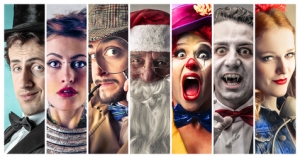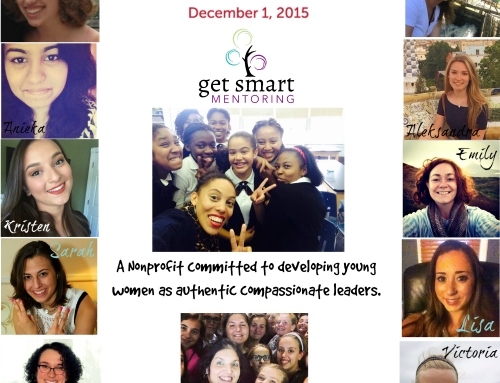 As the days creep toward Halloween, my feeling of dread increases.
As the days creep toward Halloween, my feeling of dread increases.
This is a weird feeling for me because, guys, I seriously love Halloween. I mean, I love fancy dress at the best of times—and in the UK, we do fancy dress a lot—but Halloween is just that much better. Unlike New Year, Christmas, birthdays, and all the random parties, this is the one time when it is socially acceptable for me to a) be scary and b) mess around with face paint, makeup and false blood in a way that goes far beyond wearing glittery eye shadow.
On top of that, there’s the arts and crafts: pumpkin carving, blood stains on the windows, false cobwebs on chairs. Halloween is the time when I get to pretend that I’m a five-year-old let loose in the art box.
So why am I dreading it? Well, the problem is that I have to navigate the wealth of objectionable costumes to find something that isn’t problematic, is fun to make, and that I feel confident in—and that’s nowhere near as easy as it should be.
Halloween costumes in the UK are a bit different to in the US. Over here, costumes are ALWAYS scary. And yes, I did say that I love the freedom to dress up as scary rather than “cute” or “pretty” or “professional”—but I want to be scary without adding to negative stereotypes of other people. Most of the things that we find scary are based on notions of femininity, sexuality, race, mental illness and disability. As I grow older, I feel that my list of ethical Halloween costumes grows smaller and smaller.
Insane scientist? While it feels kind of revolutionary to be a woman dressing up as a scientist, the stigmatization of people with mental health issues completely rules that out. Painting my face as a sugar skull? It may seem spooky and fun to me, but to others it’s disrespectful cultural appropriation.
Corpse bride? It used to be so much fun to wear the laciest, prettiest dress I could find, but let’s get real about the character: a woman is murdered on her wedding night. Given that most domestic and sexual violence committed against women is done by their partners, I don’t want to trivialize it in the form of a Halloween costume. And then there’s the way it adheres to that tradition of horror in which the monster is a woman in a sexual liminal zone, i.e. in which women’s sexuality turns them into horrifying, evil creatures.
Possessed child? Well, children aren’t particularly oppressed… but there’s not something very feminine about depictions of female child monsters. It’s never a tomboy who’s taken over by demons, is it?
Vampire? Witch? Both are linked to a demonization of female sexuality and independence. Could reclaiming that position be empowering? Perhaps. After all, one of the earliest imaginings of the vampire (pre-dating Stoker’s Dracula, in fact) was as a lesbian. Yet why isn’t there a scary male version of a witch?
And I know it isn’t just scary Halloween costumes that have issues with them. Whether at New Year parties or Halloween in North America, cultural appropriation is rife. White people dressing as sexualized geisha, Middle Eastern “belly dancers” and Native Americans ignores the oppression experienced by t hese cultures and reinforces negative stereotypes of them. Naughty schoolgirl costumes ignore the issues of consent, particularly when older men prey on young girls. Tight-fitting nurse’s outfits sexualize not just the wearer but an entire industry of underpaid and under-respected women and men.
hese cultures and reinforces negative stereotypes of them. Naughty schoolgirl costumes ignore the issues of consent, particularly when older men prey on young girls. Tight-fitting nurse’s outfits sexualize not just the wearer but an entire industry of underpaid and under-respected women and men.
And this is why, this Halloween, I’m feeling more dread than anticipation. Yet I know fancy dress costumes don’t have to be oppressive. There is a way to make them positive, even empowering, as well as fun.
An empowering costume is one that you choose because you like and that doesn’t denigrate, stereotype, or sexualize a group of people. Whether you go for Wednesday Addams, a pumpkin, or the fiercest scary-and-proud-of-it witch, if it meets those three criteria, it’s an excellent choice.
So I’m inviting you, Get Smart reader, to make a Get Smart pledge for Halloween costumes. Specifically, I’m asking you to commit to three things.
- Know the background of your costume. What does it represent? If it’s scary, why is it scary? If it’s sexy, why is it sexy?
- Avoid wearing it if demonizes, objectifies or stereotypes a group of people—particularly if it’s not your own group of people.
- Wear something that makes you feel good. Halloween should be fun. Just because some costumes are out doesn’t mean you can’t wear something unique, flattering and outright spectacular.
And now we’ve got all that sorted, get out there and enjoy yourself. Go all out with the arts and crafts box. Make cool accessories for your costume. Decorate all your food with spiders and bats. Get a load of chocolate in for all the trick-or-treaters.
And have a Happy Halloween from all of us here at Get Smart!









Leave A Comment